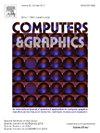低光图像增强通过照明优化和色彩校正
IF 2.8
4区 计算机科学
Q2 COMPUTER SCIENCE, SOFTWARE ENGINEERING
引用次数: 0
摘要
本文研究了微光图像的增强问题。具体而言,提出了一种基于光照优化和色彩校正的可训练微光图像增强器LLOCNet来增强微光图像的可见性。首先,设计了照度校正网络,利用残差和编解码结构对v通道的照度信息进行校正,以照亮弱光图像;然后根据亮度校正前后的差值推导出照度差图。在此基础上,提出了一种基于光照引导多头注意力的光照引导色彩校正网络,对HS色彩通道进行微调。最后,采用非对称并行卷积运算的特征融合块对增强后的特征进行调和,得到所需的高质量图像。定性和定量实验结果表明,该网络在真实世界和合成低光图像数据集上都优于其他最先进的低光增强方法。本文章由计算机程序翻译,如有差异,请以英文原文为准。

Low-light image enhancement via illumination optimization and color correction
The issue of low-light image enhancement is investigated in this paper. Specifically, a trainable low-light image enhancer based on illumination optimization and color correction, called LLOCNet, is proposed to enhance the visibility of such low-light image. First, an illumination correction network is designed, leveraging residual and encoding-decoding structure, to correct the illumination information of the -channel for lighting up the low-light image. After that, the illumination difference map is derived by difference between before and after luminance correction. Furthermore, an illumination-guided color correction network based on illumination-guided multi-head attention is developed to fine-tune the color channels. Finally, a feature fusion block with asymmetric parallel convolution operation is adopted to reconcile these enhanced features to obtain the desired high-quality image. Both qualitative and quantitative experimental results show that the proposed network favorably performs against other state-of-the-art low-light enhancement methods on both real-world and synthetic low-light image dataset.
求助全文
通过发布文献求助,成功后即可免费获取论文全文。
去求助
来源期刊

Computers & Graphics-Uk
工程技术-计算机:软件工程
CiteScore
5.30
自引率
12.00%
发文量
173
审稿时长
38 days
期刊介绍:
Computers & Graphics is dedicated to disseminate information on research and applications of computer graphics (CG) techniques. The journal encourages articles on:
1. Research and applications of interactive computer graphics. We are particularly interested in novel interaction techniques and applications of CG to problem domains.
2. State-of-the-art papers on late-breaking, cutting-edge research on CG.
3. Information on innovative uses of graphics principles and technologies.
4. Tutorial papers on both teaching CG principles and innovative uses of CG in education.
 求助内容:
求助内容: 应助结果提醒方式:
应助结果提醒方式:


